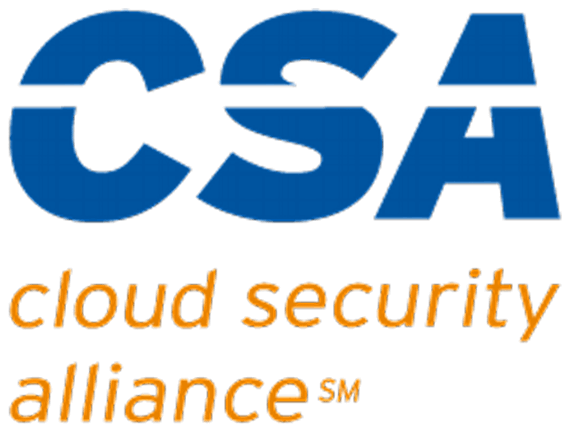Mobile devices play a central role in today’s highly connected business environment. Smartphones, tablets, and laptops enable teams to work on the go, access critical data remotely, and stay responsive regardless of location. However, this mobile flexibility also introduces new challenges for securing sensitive business information and maintaining IT control.

Developing a solid Mobile Device Management (MDM) strategy is essential for small businesses to protect assets, minimize risk, and enable secure, efficient use of mobile technology. In this article, we’ll break down the key elements of an effective MDM strategy, including protecting work data, navigating BYOD (bring your own device) policies, and choosing the right MDM tools to safeguard your business.
Why Your Business Needs an MDM Strategy
Whether company-owned or employee-owned, mobile devices used for work can pose significant security risks. Lost or stolen devices, unsecured networks, outdated apps, and poor password hygiene are just a few of the vulnerabilities that can lead to data breaches. Even a single incident can result in reputational damage, compliance violations, and financial losses for small businesses.
An MDM strategy provides the framework to:
- Enforce consistent security policies
- Manage app and data access
- Remotely wipe or lock lost devices
- Monitor device compliance
- Protect your business from unauthorized access and data loss
Without an MDM strategy, mobile devices become a weak link in your IT security posture.
Defining Business Needs and Policies
Before implementing MDM technology, small businesses should define their mobile device usage policies. Consider the following questions:
- Will the business provide company-owned devices or allow employees to use personal devices?
- What types of data and systems will be accessed via mobile devices?
- Are specific compliance requirements (such as HIPAA, PCI-DSS, or GDPR) relevant to mobile device usage?
- How will you handle the onboarding and offboarding of users and their devices?
Start by establishing a clear mobile device policy that addresses:
- Acceptable Use – Outline what is considered appropriate usage for work devices.
- Security Requirements – Set minimum standards for device encryption, screen lock settings, and operating system updates.
- Monitoring and Control – Inform employees about monitoring practices and device administrative control.
- Data Ownership – Define boundaries between personal and business data (essential in BYOD scenarios).
- Incident Response – Establish steps for reporting lost, stolen, or compromised devices.
Having well-documented policies ensures consistency and accountability across your team.
BYOD: Balancing Flexibility with Security
Bring Your Own Device (BYOD) policies are popular among small businesses for cost savings and flexibility. Employees often prefer personal devices over company-issued ones, and BYOD can increase satisfaction and productivity. However, this approach also increases the complexity of mobile device security.
Pros of BYOD:
- Lower hardware costs for the business
- Employees are more comfortable using their own devices
- Increased mobility and responsiveness
Cons of BYOD:
- Less control over device configuration and usage
- Difficulty separating personal and business data
- Potential conflicts over privacy and monitoring
- Greater risk of data leakage or non-compliance
To safely support BYOD, small businesses should implement MDM tools that allow for:
- Containerization: Segregating business apps and data from personal content
- Selective Wipe: The ability to remove only business data if an employee leaves or the device is compromised
- Policy Enforcement: Ensuring personal devices comply with security standards before accessing business systems
Clear communication and user education are critical in a BYOD environment. Employees should understand how their devices are being used, what’s being monitored, and how to report issues.
Essential Features of a Modern MDM Solution
When choosing an MDM solution, selecting a tool that supports your business needs today and can scale with your growth is important. Here are the key capabilities to look for:
1. Device Enrollment and Inventory Management
A centralized dashboard should allow IT admins to enroll, configure, and track all managed devices across the organization. This includes visibility into device models, operating systems, and user assignments.
2. Security and Compliance Enforcement
Ensure your MDM platform supports:
- Passcode enforcement
- Encryption policies
- Jailbreak/root detection
- Automatic OS and app update enforcement
- Geofencing to restrict device access by location
- Compliance reporting for regulatory audits
3. App and Content Management
You should be able to push, block, or remove specific apps on enrolled devices. Some MDM tools allow businesses to create a private app store to distribute approved apps internally.
4. Remote Lock and Wipe
In case of a lost or stolen device, your MDM system must support remote locking and the ability to wipe business data completely or selectively.
5. Access Controls and Conditional Access
Integrate MDM with identity and access management (IAM) systems to enforce access policies based on device status. For example, deny access to company email if a device is not encrypted or updated.
6. Multi-Platform Support
Look for MDM solutions that support multiple operating systems (iOS, Android, Windows, macOS) if your workforce uses a variety of devices.
7. User-Friendly Experience
A successful MDM strategy minimizes user disruption. Choose a solution that’s easy to use, quick to enroll devices, and doesn’t degrade device performance or user experience.
Training and User Awareness
Technology alone isn’t enough to secure your mobile environment. Employees need to understand their role in protecting business data. Provide regular training and reminders on:
- Recognizing phishing attempts on mobile
- Connecting only to secure Wi-Fi networks
- Not storing sensitive data in unprotected apps or cloud services
- Promptly reporting suspicious activity or lost devices
A culture of awareness is one of the strongest defenses against mobile-related security threats.
Integration with Other Security Tools
MDM should not operate in a silo. It’s most effective when integrated with other components of your IT security stack, such as:
- Endpoint Protection – MDM complements antivirus and endpoint detection tools
- Cloud Access Security Brokers (CASBs) – Monitor and secure cloud service access from mobile devices
- Mobile Threat Defense (MTD) – Adds advanced threat detection and response capabilities
- Identity and Access Management (IAM) – Ensure only authorized users access business systems from verified devices
An integrated approach improves your visibility and control over mobile access to business data and services.
The Datacate Advantage
At Datacate, we understand that small businesses need practical, effective solutions to stay secure while remaining agile and productive. Our experts can help you design and implement a tailored Mobile Device Management strategy that aligns with your business goals and budget.
Whether you’re supporting company-issued devices, enabling BYOD, or a mix of both, we’ll help you choose the right tools and policies to reduce risk and protect your critical assets. From setup to support, Datacate provides hands-on assistance and continuous monitoring to ensure your MDM strategy evolves with your business.
Ready to take control of mobile security in your organization? Contact Datacate today to learn how we can help you implement a robust MDM solution that keeps your data safe and your team productive—anywhere, anytime.




